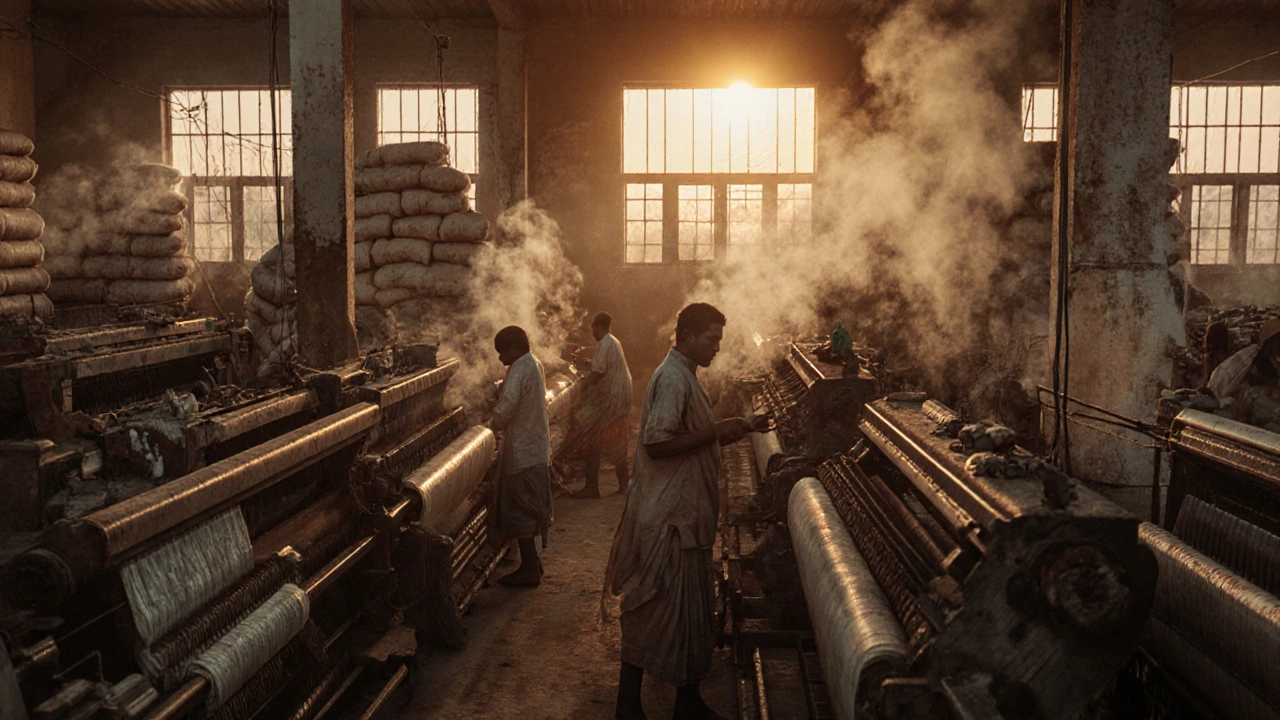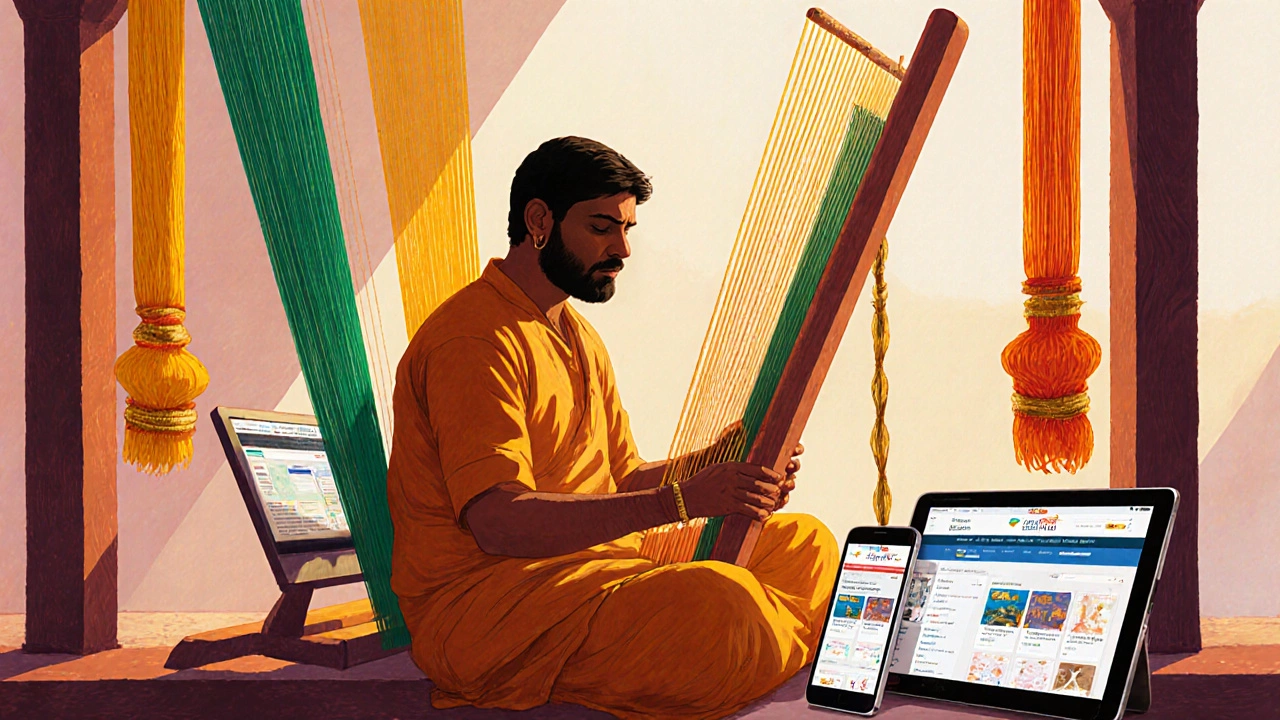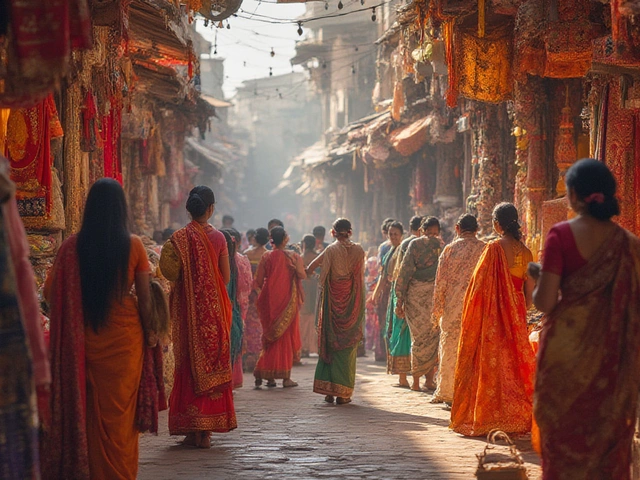
Textile Export Growth Calculator
Calculate your potential textile export growth based on India's current industry trends. The calculator uses data from the article showing 2024 exports of $42B with 5% annual growth potential from government initiatives like the PLI scheme.
Projected Export Value
With 5% annual growth rate (based on PLI scheme impact), your export value could reach USD billion in years.
Sustainability Impact
For every 1,000 tons of fabric produced:
With sustainable practices (using recycled materials and water recycling), water usage can be reduced from 200 tons to 70 tons per ton of fabric produced.
India’s textile industry isn’t just old-it’s alive, evolving, and still the backbone of millions of livelihoods. It’s not a single factory or brand you can point to. It’s the weaver in Varanasi, the dyer in Surat, the mill worker in Tamil Nadu, and the exporter in Mumbai all working in sync. In 2025, the Indian textile industry is worth over $150 billion, employs nearly 45 million people, and accounts for 12% of the country’s total exports. That’s more than pharmaceuticals, electronics, or automobiles combined. But behind these numbers is a sector caught between tradition and transformation.
Textile manufacturing in India is deeply rooted in cotton
India grows more cotton than any other country in the world. In 2024, it produced over 6.2 million bales, thanks to states like Gujarat, Maharashtra, and Telangana. This isn’t just raw material-it’s the foundation. Around 60% of all textile output in India comes from cotton. But here’s the catch: while India grows the cotton, it doesn’t always keep the value. A lot of raw cotton still gets exported to China, Bangladesh, and Vietnam, where it’s spun, woven, and turned into finished garments before being sold back to India at higher prices. That’s changing. More Indian mills are now investing in spinning, weaving, and finishing locally. Companies like Arvind Limited and Welspun India are building vertically integrated factories that turn cotton into bed sheets, towels, and denim without leaving the country.
Exports are growing, but competition is fierce
India exported $42 billion worth of textiles and apparel in 2024, up from $36 billion in 2022. The U.S. and the EU are still the biggest buyers, but now Bangladesh, Vietnam, and Indonesia are snapping at its heels. What’s different this time? India is no longer just making low-cost T-shirts. It’s moving into technical textiles-medical gowns, geotextiles for roads, fire-resistant fabrics for firefighters, and even textiles used in space suits. The government’s Production Linked Incentive (PLI) scheme, launched in 2021, gave $2.6 billion in subsidies to 120 textile firms to upgrade machinery and boost high-value exports. Companies like Trident Group and KPR Mill have used this money to install automated looms and digital printing machines that cut waste and speed up production.
Small mills are struggling, but digital tools are helping
Out of the 1.5 million textile units in India, over 90% are small or micro-enterprises. Many still use handlooms or old power looms from the 1980s. These businesses can’t compete with big factories on speed or price. But they’re not disappearing. Thanks to government-backed platforms like Textile India a digital marketplace connecting small textile manufacturers with global buyers, these small players are finding new customers. A weaver in Odisha who used to sell handloom saris to local shops can now list them on a government portal and ship them to buyers in Germany or Japan. Digital payment systems and logistics partnerships with companies like Delhivery have made it easier than ever for tiny units to reach global markets without middlemen.

Government policies are reshaping the landscape
The Indian government isn’t sitting idle. The Textile Mission a multi-year national strategy to modernize and scale the textile sector aims to double textile exports by 2030. It’s funding skill centers in rural areas to train young people in computer-aided design, quality control, and sustainable dyeing. The Amended Technology Upgradation Fund Scheme (ATUFS) a subsidy program helping textile units replace outdated machines has helped over 8,000 units upgrade their equipment since 2022. There’s also a push for sustainability. The government now requires large exporters to report their water usage and chemical waste. Brands like Fabindia and Arvind are already using organic cotton and recycled polyester in their collections.
Challenges remain: power, water, and skilled labor
Despite the progress, the industry still faces big hurdles. Power outages in rural areas still disrupt production-some mills lose 15-20 hours of output every month. Water scarcity is another issue. Dyeing one ton of fabric can use up to 200 tons of water. Many small factories still dump untreated dye into rivers, risking fines and shutdowns. And while there are millions of workers, there’s a shortage of skilled technicians who can operate modern machines. Training centers are opening, but it takes time. A 2024 survey by the National Council for Applied Economic Research found that only 18% of textile workers had formal training in machine operation or quality testing.

The rise of sustainable and smart textiles
One of the most exciting shifts is happening in innovation. Indian startups are now creating textiles that do more than cover you-they heal, monitor, and adapt. A company called Sustec Innovations a Bengaluru-based startup producing biodegradable textile fibers from agricultural waste makes fabric from banana and pineapple fibers that break down in soil within 90 days. Another, Nanotex India a Chennai-based firm developing wearable sensors embedded in fabric, has created shirts that track heart rate and body temperature for elderly patients. These aren’t lab curiosities anymore-they’re being used in hospitals and sold online. The global market for smart textiles is expected to hit $10 billion by 2027, and India is positioning itself to capture a share.
What’s next for Indian textile manufacturers?
The next five years will decide whether India becomes a global leader in textiles or stays stuck as a supplier of cheap goods. The pieces are there: raw material, labor, policy support, and growing tech adoption. But success means more than building bigger factories. It means building smarter ones. It means training workers to handle digital looms, not just fix broken shuttles. It means turning waste into fuel, water into reusable resources, and cotton into high-value products that the world can’t ignore. The Indian textile industry isn’t just surviving-it’s reinventing itself. And for the first time in decades, it’s doing so on its own terms.




